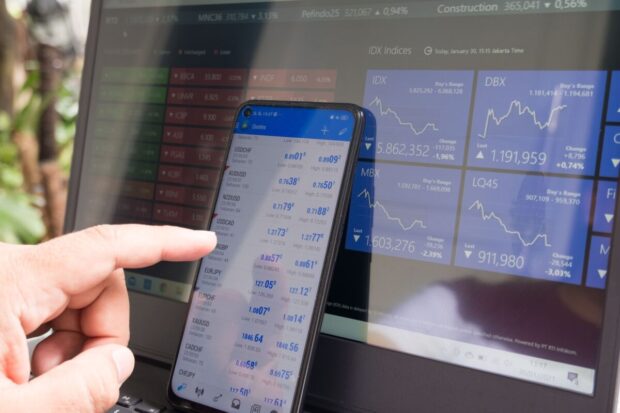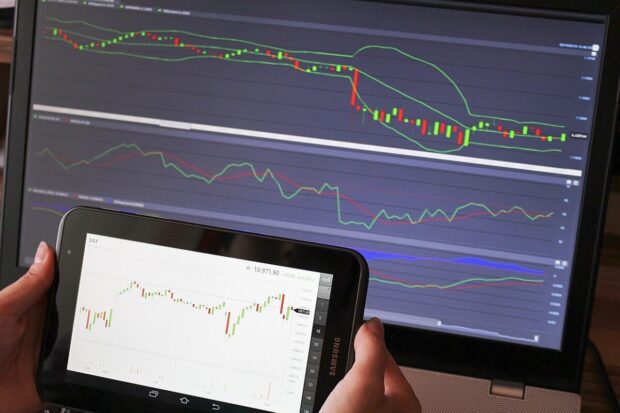
For those new to trading, choosing the right platform and taking the first steps can feel overwhelming. With so many options available, it’s important to understand the essentials before entering the market. Success often depends on having the right tools, setting realistic goals, and adopting a disciplined approach from day one.
Key Points:
- Research different platforms and choose one that suits your needs.
- Set clear financial goals before entering the market.
- Use demo accounts to practice trading.
- Start with small investments and build experience gradually.
- Focus on learning risk management strategies.
Choose the Right Trading Platform
Selecting a trading platform is a critical decision for any beginner. One must consider factors like fees, accessibility, and tools provided. For example, Binomo offers an easy-to-use interface and a demo account with $10,000 to practice trading.
Beginners can learn how to open trades without risking real money, making it a valuable tool to build confidence and skills. Small initial investments, starting from just $1, allow traders to minimize losses during the learning phase. This approach helps build a solid foundation for future trading success.
Start with a Demo Account
A demo account is a vital first step. It allows beginners to experience the trading environment without any financial risk. Most platforms offer this feature. By trading in real-time conditions, one can learn how to analyze market movements, track performance, and understand how profits or losses occur. This learning phase can last anywhere from a few days to a few months, depending on how quickly one becomes familiar with market behavior.
Testing out different strategies in a demo environment can save significant money down the road. It’s crucial to master technical tools and learn how orders are placed before risking real capital.

Set Clear Financial Goals
Before placing a single trade, every beginner must set clear and achievable financial goals. This means determining what you aim to accomplish: Are you looking for short-term gains, or is your focus on long-term growth? Defining these goals early on will influence many decisions, including which assets to trade and how much risk to take. A disciplined strategy involves sticking to these goals, even when emotions run high in the face of market volatility.
Without well-defined goals, beginners risk falling into emotional trading, which often leads to unnecessary losses. A strategic mindset is essential for consistent growth.
Focus on Risk Management
Even the most seasoned traders rely on strict risk management protocols to protect their investments. Beginners should aim to keep their risk per trade low, typically around 1-2% of their total portfolio. Stop-loss orders can help manage losses by automatically closing positions when prices reach a predetermined level.
Leverage, a tool often offered by trading platforms, can amplify both profits and losses. Beginners should use leverage cautiously, if at all, and focus instead on learning market trends and price action.
Learn the Basics of Technical Analysis
Technical analysis involves studying historical price data, charts, and various indicators to forecast future price movements. Common tools include moving averages, relative strength index (RSI), and Bollinger Bands. By combining these tools, traders can make informed decisions about when to enter and exit positions.
Beginners don’t need to become experts overnight, but learning the basic concepts will give them a significant advantage. Some platforms provide built-in charting tools and educational resources to help new traders understand how markets move.

Start Small and Build Gradually
New traders should avoid the temptation to start with large sums of money. It’s recommended to begin with small investments, as this reduces the emotional strain associated with losing capital. As confidence grows, one can gradually increase investment amounts. Some platforms allow users to trade with as little as $1, which is ideal for beginners who want to practice without major financial exposure.
Small investments also allow traders to experiment with various asset classes such as stocks, commodities, or forex, gaining experience in different market conditions.
Continuous Learning is Key
Markets are dynamic, and even seasoned traders need to stay informed. Reading financial news, watching market trends, and learning from experienced traders will keep beginners up to date with the latest developments. Many platforms provide educational materials, including webinars, eBooks, and tutorials. Taking advantage of these resources is essential for ongoing success.
Joining trading communities or forums can also provide valuable insights. Sharing experiences and discussing strategies with other traders helps beginners avoid common pitfalls.
Monitor Your Progress
Many platforms offer performance tracking tools, allowing traders to review their trades and assess their strategies. By understanding which trades were successful and which were not, traders can adjust their methods accordingly. Reviewing progress on a regular basis helps to identify patterns, mistakes, and areas for improvement.
Beginners should aim to develop a consistent routine. This includes analyzing trades at the end of each day or week, identifying trends, and adjusting strategies based on past performance.

Conclusion
Getting started with trading platforms requires careful planning, discipline, and a willingness to learn. By choosing the right platform, setting clear financial goals, focusing on risk management, and learning technical analysis, beginners can build a strong foundation for long-term success. Starting with a demo account and making small investments are important steps to minimize risk while gaining experience.
Finally, controlling emotions and continuously learning will help traders improve and adapt to changing market conditions.




